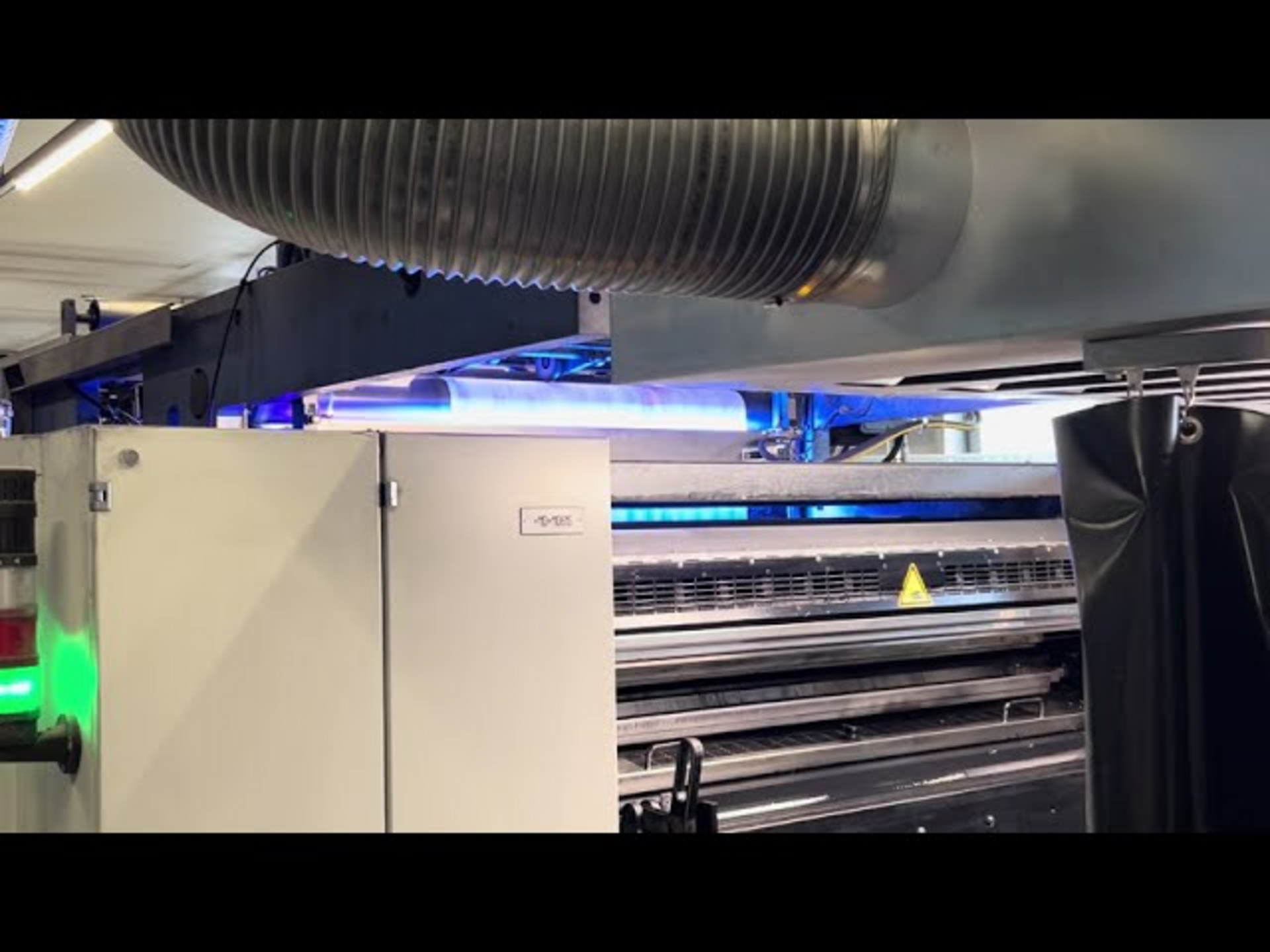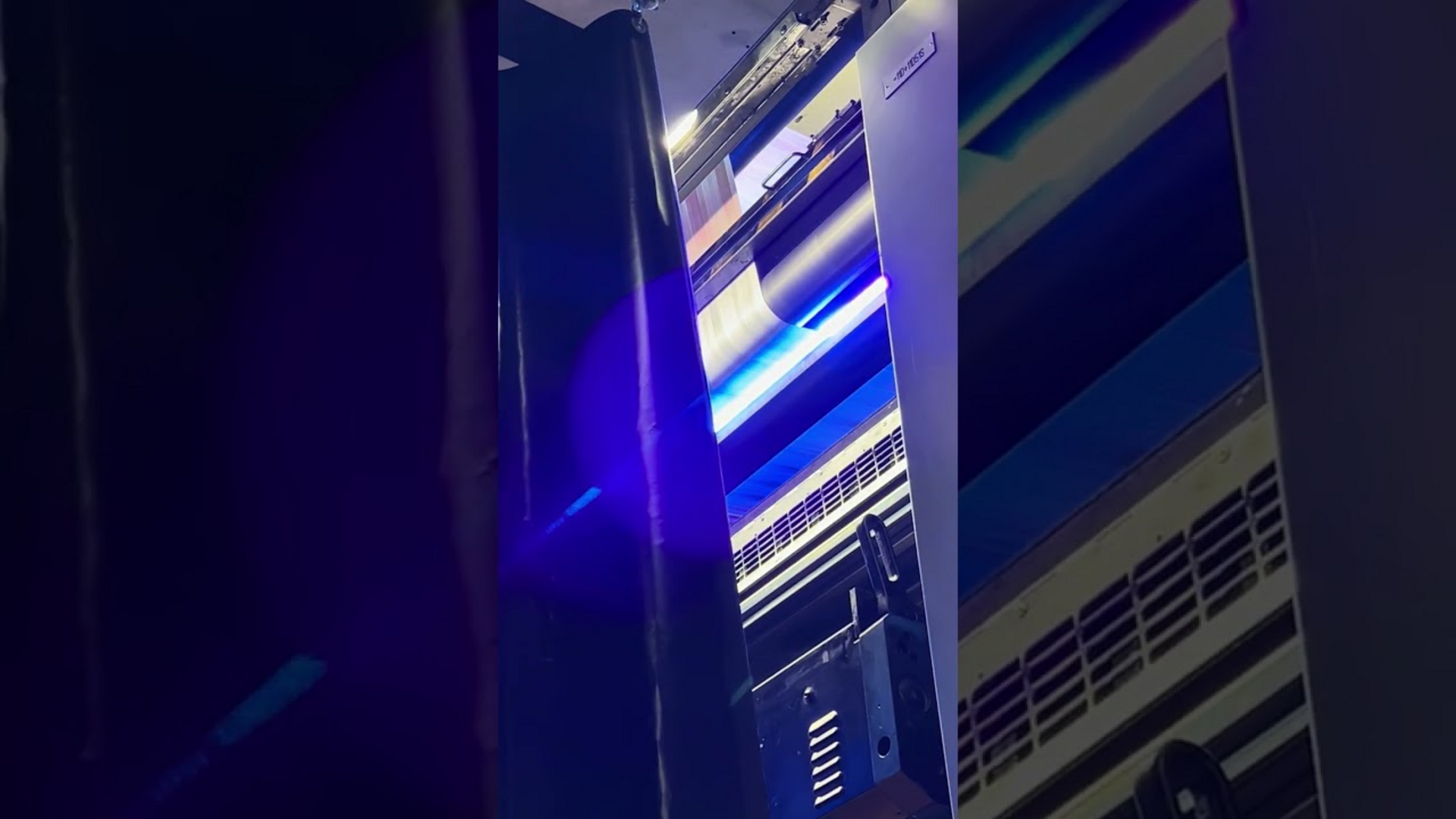New opportunities for Coldset
Newspaper printer CH Media Print wants to keep insert printing in-house. To this end two printing towers were equipped with LED UV lamps from IST METZ. Since January 2023 the ‘commercial products’ have been contributing to the capacity utilisation of the Swiss company.
Interview: Gerd Bergmann (Deutscher Drucker)
Managing Director Heinz Meyer and Production Manager Adrian Hammer played a leading role in driving forward the LED curing project in Aarau. Deutscher Drucker spoke to them and to Arnd Riekenbrauck, Head of Sales at IST Metz in Nürtingen.
DD: Mr Meyer, can you briefly introduce CH Media Print briefly?
Heinz Meyer: Under the umbrella of CH Media Print Print is the umbrella organisation for the media group's printing operations. In addition to the the main site in Aarau, we have plants in St Gallen and Derendingen. In St Gallen there is a Wifag with 6 printing towers. Here in Aarau we have 8 KBA printing towers. Derendingen, that is Vogt-Schild AG, a heatset commercial print shop. CH Media Print has a total of around 250 employees, 120 of whom work in Aarau.
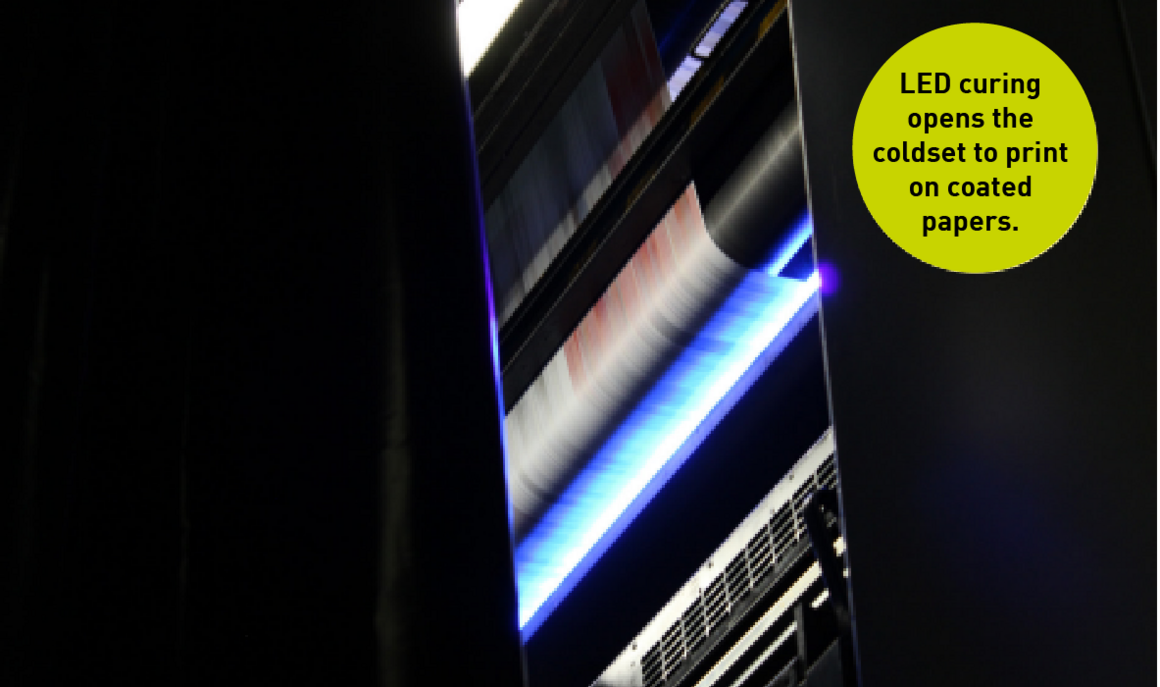
DD: How would you characterise your technical characterise?
Meyer: We have always had the ambition to bring innovation to the newspaper printing business. In view of the declining circulation of daily newspapers question for us was whether we could accept that. Or whether we should counteract it. The Wanner publishing family is committed to printing and so we launched the and so we launched the LED curing project around four years ago project around four years ago - on the premise that we could the classic declining newspaper printing business with new products. We are the only media company in Switzerland that can offer coldset offset, LED-UV printing and heatset. And with the exit of larger heatset printing companies in Switzerland, we are the only company that can produce large print runs of more than 16 pages in one run.
DD: Was there a triggering ‘aha’ moment?
Meyer: There were aha moments every week. Whenever we saw how many inserts were being inserts were delivered. We have printing machines and could print one or two of them ourselves, collect them on and collect them directly. In addition ecological aspect: we then have no transport no transport costs.
Adrian Hammer: We've also been active in the magazine sector with pure coldset for a long time. We turned to magazines early on. We produce content and covers with different different papers. In the coldset newspaper sector, however, we realised that we were reaching a quality limit. Not because of the print quality, but in terms of and show-through. This has prevented us from winning additional magazines for us. That was kind of the point, where we had to realise: Hey, with LED curing we would have completely different possibilities.
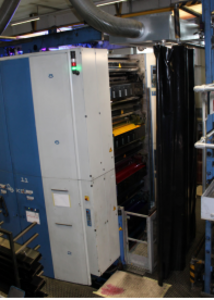
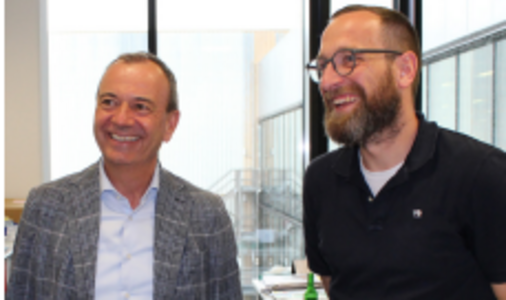
Production Manager Adrian Hammer) is addressing new market segments with printing on coated papers.
DD: What do you need to bear in mind to make this a success?
Meyer: First of all, you need an incredible amount of commitment and motivated employees. And as Adrian Hammer said: We wanted to compete with heatset printers - in the supplement business. CH Media publishes a lot of regional newspapers, and a lot of inserts are inserted. These are produced and delivered by other print shops. We want to keep this added value with us. We wanted to fill the slots that are no longer filled by the daily newspapers with third-party orders. Because initial results with LED curing were very promising, we pushed ahead with this with all determination. But of course we had to learn the hard way. Today we can now say can now say that we have the process under control. And we
can produce large runs. With regard to cost structure, we are of course better off with UV inks put us at a slight disadvantage compared to the ‘classic’ monochrome printers.
DD: What does that mean? Is there a specific circulation range that you can serve?
Meyer: Above all, it depends on the run lengths: We shouldn't go below 20 pages, because the 16-page machines then have two passes. We can produce up to 64 pages in A4 oversize format in one pass. In terms of print runs, we shouldn't block the machine too much for night production. 200,000 to 300,000 copies is the ideal range. ideal range, but it can also be around 2 million up or down to 20,000.
DD: Do you run such products out of the machine into a stitching and cutting drum?
Hammer: We could also staple them in the machine, because we have a ribbon stapler and a ply stapler. However, the rotary staples are not as aesthetically pleasing as the staples in the Ferag drum. When I produce for the magazine sector, I simply expect beautiful staples. For this reason, we have also purchased a Ferag Streamstich system, which allows us to staple over two lines in the despatch department.
DD: You mentioned the topic of paper - what has what has CH Media Print used so far?
Meyer: The glossy coated and semi-matt papers from UPM semi-matt papers work very well. Also the regional papers from Perlen. It starts at 42 g/m2 and goes up to 120 g/m2.
DD: Is there a limitation?
Meyer: Natural papers with LED curing don't really achieve much. They hardly gain anything from the surface structure. In other words
In other words, you can see relatively little difference to a normal coldset.
Arnd Riekenbrauck: SC papers also look really good, especially when you compare them with heatset. They have a great look and are wonderfully smooth. You simply don't have the problem of siliconisation and remoistening.
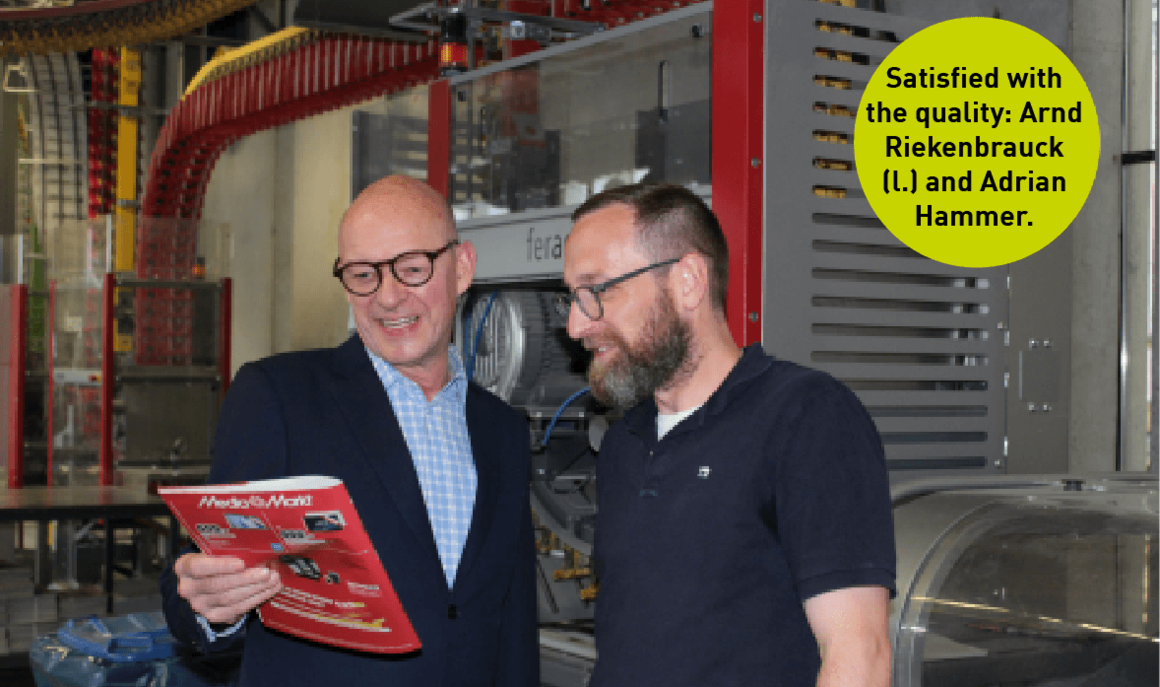
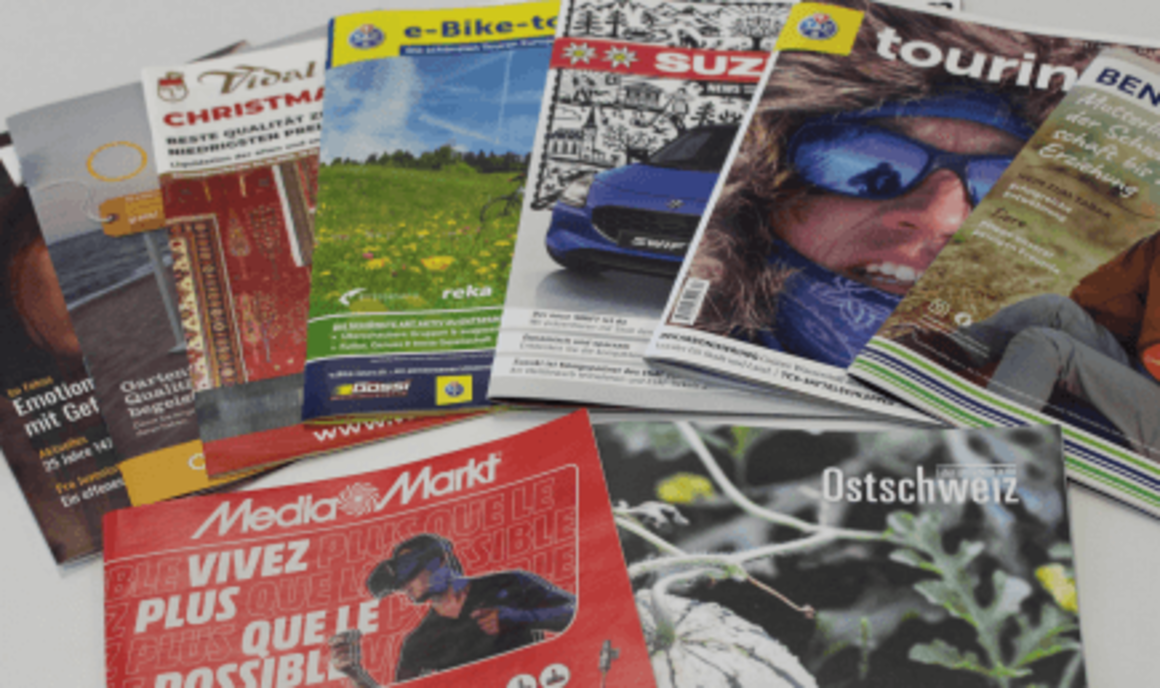
DD: You must have another colour circuit for the machine colour circuit for the machine?
Hammer: Yes, that's still a bit difficult. When we installed the KBA Commander CT in 2014, two printing towers were placed on top of each other twice. And now the situation is such that the LED application takes place in these upper printing towers. Our main problem is that UV ink can only be conveyed a maximum of 20 metres. So we can't go down into the basement with the ink supply. We are currently filling the LED UV ink by hand. However, we are in talks with various suppliers and are looking for creative solutions. We started in January 2023 with the LED UV orders started. In the first year, we produced around 7 million net units using this process. That's quite a lot - of the total volume at CH Media Print Aarau, this is around one per cent. The higher the proportion, the more justification we would have for installing a second colour supply.
DD: In other words, do you currently print with both LED UV ink and conventional ink on the aforementioned upper printing units?
Hammer: Exactly, we produce in rotation. We had the idea of working with insert colour boxes. However, this is difficult on a KBA machine because of the colour knives at the bottom. So we have now developed something ourselves that helps us to empty all the ink ducts as quickly as possible. And then we worked together with Koenig & Bauer on the corresponding processes so that we now need a maximum of one hour to switch to to the other colour system. The ramp-up programme helps us to remove the zone screws completely and to generate a maximum maximum ductor feed rate.
DD: Is it a problem if residues of the old paint remain in the machine?
Hammer: If there are small residues, that's not a problem. Anything you can get with the scraper is fine. The rest stays in.
DD: So why did you use the two upper towers for the LED UV insert?
Hammer: The towers, which are one above the other, are relatively cramped. However, we wanted to install a paint mist extraction system on the LED curing systems.
Meyer: That was never an issue with conventional inks, but in the LED UV area we are talking about uncured photopolymers, which we don't want in our pressroom. We also have curtains around the tower and when our employees fill the ink, they wear protective suits. It has always been very important to us that we take the greatest possible care of our employees. The extraction system cost a lot of money, but the health of our employees is simply our top priority. Thanks to the extraction system, we now have air quality as if we were not printing.
DD: What about topics such as blankets?
Hammer: Good now, but that was a longer project. A pure LED UV blanket was used in the first test, but then we realized that it also works with the previous blankets and that was very important to us. The blanket has to be compatible with both processes, because converting would not be an option in practice. The rubber rollers in the machine are unchanged. Only if we were to operate the two retrofitted towers exclusively with LEDs in the future would we install different rollers. For the blanket washing system, we rely on Baldwin with Prepac cleaning cloths. For conventional However, we have different Prepacs for conventional colors than for LED UV.
DD: You had the special situation with Covid. But how long would the project have run without the delays caused by the pandemic?
Meyer: I think between 12 and 18 months. Of course, the decisive factor is that IST Metz was involved in the spotlight sector right from the start and provided two suitable spotlights relatively quickly in line with our machine width. You need the right partners and incredibly good planning. Then it works. Our suppliers were all very motivated to make a difference here.
Riekenbrauck: We manufacture spotlights up to 3 meters long with 40 watts of power per square centimeter. Development is already well advanced. There are no longer any restrictions in terms of technical implementation - both in terms of width and production speed.
DD: In other words, you could simply reach into your construction kit?
Riekenbrauck: IST Metz has now equipped over 50 printing towers in newspaper printing over the past two decades - for various applications such as insert or cover printing. So we have a lot of experience, both in technical implementation and in projects. It is important that customers know exactly where they want to go. If you look at the inserts here at CH Media, which have an almost gravure-like feel and no destruction of the paper surface, then you can see that such products in LED-UV make perfect sense.
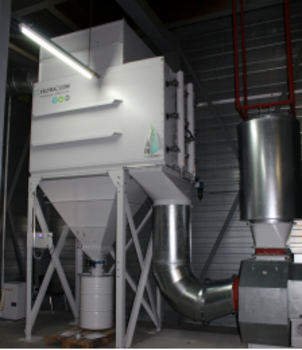
DD: Mr. Hammer spoke earlier about 7 million net copies in 2023.
Meyer: We assume that we will be able to generate between 5 and 10 percent of our print sales via this channel in the medium term.
be able to do so. Sales activities have increased massively.
DD: How is the market reacting?
Meyer: We have received repeated confirmation that the products are comparable to heatset are comparable to heatset. No rippling, very nice feel. Large volumes in a relatively short time in lean production - that's the big advantage when you come from the structure of classic newspaper printing. The market accepts this process. Of course, there are outliers who, when they hear LED-UV, say: No, we don't want that. But the majority of customers accept this printing variant. There are also advertising market customers who will accept a small downgrade if the price is right.
